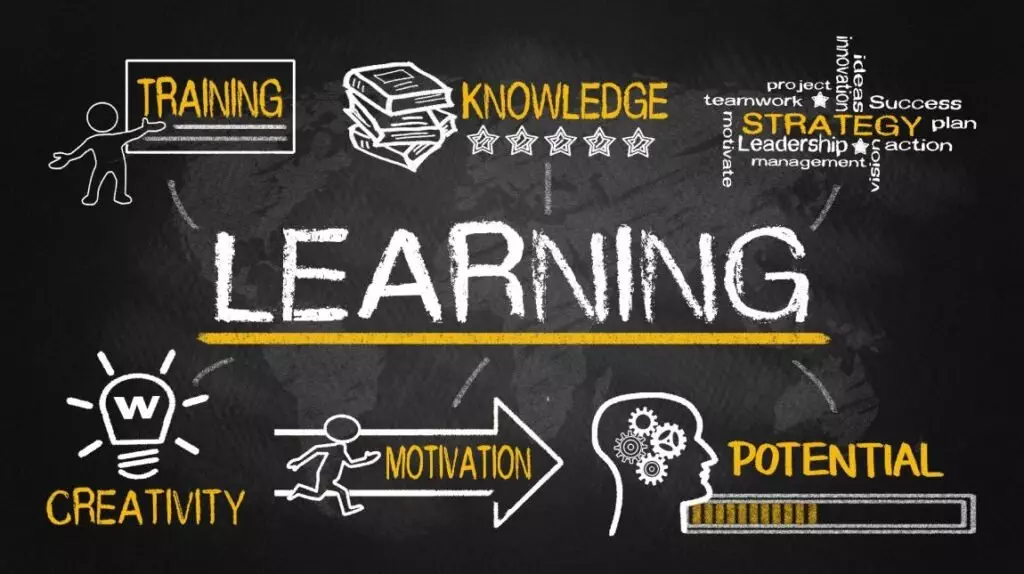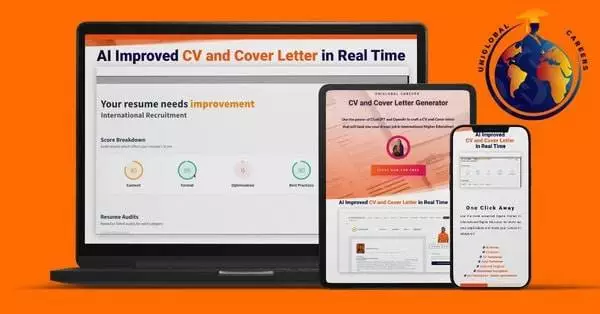Joint degree programs are quickly gaining popularity among higher education institutions as they offer a comprehensive and diverse learning experience that is well suited to the constantly evolving economic landscape. And with the advent of Artificial Intelligence (AI), the opportunities for learning, collaboration, and innovation have become even greater. In this article, we explore the benefits of using AI in joint degree programs and how it enhances the learning experience, streamlines administrative tasks, and advances research and innovation.
Understanding AI and Joint Degree Programs
Before we delve into the benefits of integrating AI into joint degree programs, it is essential to understand what both terms mean.
What is Artificial Intelligence (AI)?
AI refers to the ability of machines to perform tasks that typically require human intelligence, such as pattern recognition, decision-making, and language translation. With the rapid advancement in AI technology, it has become feasible to automate routine processes and provide personalized learning experiences to students.
AI has the potential to revolutionize education by providing students with individualized learning experiences. For example, AI-powered tools can analyze a student’s learning patterns and create a personalized learning plan that caters to their strengths and weaknesses. AI can also provide real-time feedback, enabling students to identify areas they need to improve on and adjust their learning accordingly.
Moreover, AI can automate routine tasks such as grading and administrative work, freeing up educators’ time to focus on more meaningful tasks such as designing curricula and providing personalized feedback to students.
What are Joint Degree Programs?
Joint degree programs are educational programs where a student can earn degrees from two different institutions by completing specific requirements. Joint degree programs allow universities to combine their resources and expertise to provide students with a more comprehensive and diverse learning experience.
Joint degree programs offer several benefits to students. Firstly, they provide students with a broader range of courses and resources, enabling them to develop a more diverse skill set. Secondly, joint degree programs allow students to network with peers and faculty members from different institutions, increasing their exposure to different perspectives and ideas.
Furthermore, joint degree programs can enhance students’ employability by providing them with a unique combination of skills and knowledge. Employers often value candidates with diverse educational backgrounds and experiences, making joint degree programs a valuable asset for students.
Integrating AI into joint degree programs can further enhance their benefits. AI-powered tools can provide students with personalized learning experiences, enabling them to develop skills and knowledge that cater to their specific interests and career goals. AI can also enable universities to optimize their resources and provide students with a more efficient and effective learning experience.
In conclusion, AI and joint degree programs have the potential to revolutionize education by providing students with personalized and diverse learning experiences. By combining their resources and expertise, universities can offer students a unique educational experience that prepares them for the challenges of the future.
Enhancing the Learning Experience
One of the benefits of incorporating AI into joint degree programs is that it can enhance the learning experience for students.

With AI, students can have a more personalized learning experience. AI-enabled learning platforms can track individual student progress and tailor learning paths to meet their specific needs. This means that students have access to customized content, which allows them to learn at their own pace and in their preferred learning style. For example, if a student is struggling with a particular concept, the AI system can recommend additional resources or provide extra practice exercises to help them master the material. This personalized approach increases engagement and retention, leading to better academic outcomes.
Moreover, AI can help improve student engagement by providing real-time feedback and assessments. Rather than waiting for a lecturer’s response, students can receive immediate feedback on their work. This real-time feedback leads to increased engagement and motivation, as students can track their progress and identify areas that require improvement. For instance, if a student submits an assignment, the AI system can provide feedback on their strengths and weaknesses, as well as suggestions for improvement. In this way, students can take ownership of their learning and work towards achieving their academic goals.
Enhanced Collaboration and Communication
Another benefit of incorporating AI into joint degree programs is that it can enhance collaboration and communication among students. With AI-enabled tools, students can collaborate on projects and assignments in real-time, regardless of their location. For example, students can use AI-powered chatbots to communicate with each other and share ideas. These chatbots can also provide helpful resources and answer questions, freeing up time for students to focus on their work.
Furthermore, AI can help students develop important communication skills. AI-powered virtual assistants can provide students with practice scenarios that simulate real-life situations, such as job interviews or business meetings. These simulations can help students develop their communication skills and build confidence, preparing them for success in their future careers.
In conclusion, incorporating AI into joint degree programs can provide numerous benefits for students. From personalized learning paths to improved engagement and collaboration, AI can enhance the learning experience and prepare students for success in their future careers.
Streamlining Administrative Tasks
Joint degree programs can be complex and time-consuming, involving collaboration between different institutions and administrative staff. However, integrating AI technology into the administrative tasks of joint degree programs can help streamline processes and save time.
Automating Routine Processes
One of the ways AI can benefit joint degree programs is by automating repetitive tasks. AI-enabled chatbots, for instance, can be used to answer frequently asked questions, reducing the administrative workload and increasing efficiency. This frees up administrative staff to focus on more complex and strategic activities, such as program development and student engagement.
Moreover, AI can help identify patterns and trends in administrative processes that can be optimized for efficiency. For example, AI can analyze data on student enrollment and course registration to predict future demand and allocate resources accordingly. This can help universities operate more efficiently and cost-effectively.
Efficient Resource Allocation
Another way AI can benefit joint degree programs is by helping universities optimize their resource allocation. By identifying areas of low utilization and reallocating resources to areas with higher demand, universities can improve student outcomes and reduce costs. For instance, AI can analyze data on classroom utilization to determine when and where classrooms are being used most effectively, and then allocate resources accordingly.
AI can also help universities identify areas where additional resources are needed. For example, AI can analyze data on student performance and engagement to identify areas where students may need additional support or resources. This can help universities provide more targeted and effective support to students, improving student outcomes and retention rates.
Simplifying Collaboration between Institutions
Joint degree programs involve collaboration between different institutions, which can be complicated and time-consuming. AI can simplify this collaboration by automating the transfer of information and streamlining communication between institutions. For example, AI can be used to automatically transfer student data and course information between institutions, reducing the administrative workload and ensuring a better learning experience for students.
In addition, AI can help facilitate collaboration between faculty members at different institutions. For example, AI can be used to match faculty members with similar research interests and facilitate communication between them. This can help foster collaboration and knowledge-sharing among faculty members, leading to improved research outcomes and a better learning experience for students.
Overall, integrating AI technology into the administrative tasks of joint degree programs can help universities operate more efficiently, reduce costs, and improve student outcomes. By automating routine processes, optimizing resource allocation, and simplifying collaboration between institutions, AI can help universities focus on what matters most: providing a high-quality education to their students.
Advancing Research and Innovation
Artificial Intelligence (AI) has revolutionized the way we think about research and innovation. With its ability to analyze large amounts of data, AI can provide unique insights and opportunities for collaboration and interdisciplinary research in joint degree programs.

AI-driven Research Opportunities
One of the most significant benefits of AI in research is its ability to identify patterns and trends in data that humans may have missed. This technology can help researchers make new discoveries and uncover opportunities for further research. For instance, in the field of personalized medicine, AI can analyze a patient’s genetic data to identify the best treatment options for that individual. This approach can lead to more effective treatments and better patient outcomes.
Moreover, AI can also be used in predictive analytics to forecast future trends and outcomes. This approach can be useful in various fields, such as finance, healthcare, and marketing, to name a few. By leveraging AI’s predictive capabilities, researchers can make informed decisions and develop strategies that are more likely to succeed.
Interdisciplinary Collaboration
Another significant advantage of AI in joint degree programs is its ability to facilitate interdisciplinary collaboration between different faculties and schools. By collaborating with other institutions and disciplines, students can gain a better understanding of real-world problems and be provided with relevant solutions. For example, AI can be used to analyze environmental data to identify the causes of climate change. This approach requires collaboration between environmental scientists, computer scientists, and policymakers, among others.
Moreover, AI can also be used to create virtual research environments that enable students to collaborate with researchers from different fields and institutions. This approach can help break down traditional barriers to collaboration and foster a more inclusive and diverse research community.
Fostering a Culture of Innovation
Finally, AI is a critical enabler of innovation, which is essential to the success of joint degree programs. By fostering a culture of innovation, students can learn to approach problems creatively and develop solutions that are sustainable and effective. AI can be used to create virtual environments that simulate real-world scenarios, allowing students to experiment with different approaches and learn from their mistakes.
Moreover, AI can also be used to create personalized learning experiences that cater to individual student’s needs. By leveraging AI’s adaptive learning capabilities, educators can provide students with tailored feedback and support, leading to better learning outcomes.
In conclusion, AI provides unique opportunities for research and innovation in joint degree programs. By leveraging its analytical capabilities, fostering interdisciplinary collaboration, and fostering a culture of innovation, AI can help students develop the skills and knowledge they need to succeed in the 21st century.
Conclusion
Integrating AI into joint degree programs offers various benefits, from enhancing the learning experience through personalized learning paths to streamlining administrative tasks and fostering a culture of innovation. Incorporating AI into joint degree programs is a promising way to create an environment that equips students with the skills and competencies they need to succeed in a rapidly changing technological landscape.


